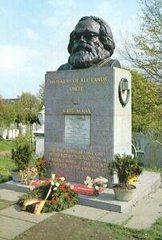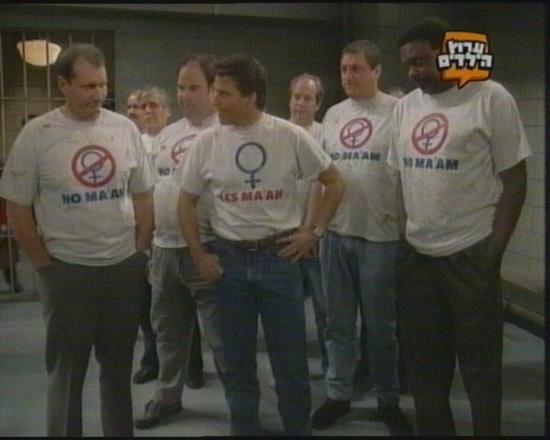Gale Encyclopedia of Russian History: Family Code of 1926
"In 1926 the Soviet government affirmed a new Code on Marriage, the Family, and Guardianship to replace the 1918 version. Adopted after extensive and often heated nationwide debate, the new Code addressed several social issues: the lack of protection for women after divorce; the large number of homeless orphans (besprizorniki); the incompatibility of divorce and common property within the peasant household; and the mutual obligations of cohabiting, unmarried partners.
The new Code promoted both individual freedom and greater protection for the vulnerable. It simplified the divorce procedure in the 1918 version even further by transferring contested divorces from the courts to local statistical bureaus. Either spouse could register a divorce without the partner's consent or even knowledge. This provision removed the law's last vestige of authority over the dissolution of marriage, circumscribing both the power of law and the marital tie. The Code recognized de facto marriage (cohabitation) as the juridical equal of civil (registered) marriage, thus undercutting the need to marry "legally." It provided a definition of de facto "marriage" based on cohabitation, a joint household, mutual upbringing of children, and third party recognition. It established joint property between spouses, thus providing housewives material protection after divorce. It abolished the controversial practice of "collective" paternity featured in the 1918 Family Code. If a woman had sexual relations with several men and could not identify the father of her child, a judge would assign paternity (and future child support payments) to one man only. The Code incorporated an April 1926 decree that reversed the prohibition on adoption and encouraged peasant families to adopt homeless orphans, who were to be fully integrated into the peasant household and entitled to land. It set a time limit on alimony to one year for the disabled and provided six months of alimony for the needy or unemployed. It also created a wider circle of family obligations by expanding the base of alimony recipients to include children, parents, siblings, and grandparents."
Bibliography
Farnsworth, Beatrice. (1978). "Bolshevik Alternatives and the Soviet Family: The 1926 Marriage Law Debate." In Women in Russia, eds. Dorothy Atkinson, Alexander Dallin, Gail Warshovsky Lapidus. Sussex, UK: Harvester Press.
Goldman, Wendy. (1984). "Freedom and Its Consequences: The Debate on the Soviet Family Code of 1926." Russian History 11(4):362 - 388.
Goldman, Wendy. (1991). "Working-Class Women and the 'Withering-Away' of the Family: Popular Responses to Family Policy." In Russia in the Era of NEP: Explorations in Soviet Society and Culture, eds. Sheila Fitzpatrick, Alexander Rabinowitch, Richard Stites. Bloomington: Indiana University Press.
Lapidus, Gail Warshovsky. (1978). Women in Soviet Society. Berkeley: University of California Press.
Quigley, John. (1979). "The 1926 Soviet Family Code: Retreat from Free Love." Soviet Union 6(2):166 - 74.
—WENDY GOLDMAN
------------------------------------------------------------------------
Related Article:
Roots of American Culture and Community in Disarray
Search This Blog
The Jiggly Room
Polk High
The Encyclopedia Marxofeminist

Feminist "Equality" Includes The Loss of Free Speech
Sheeple Fighting Back!
- Black Sheep - You Tube (2min)
- Symantec (SYMC - NASDAQ) Downgraded to "Sell"
- Problems With Norton Internet Security?
- Cypress CEO Responds to Nun's Urging a "Politically Correct" Board Make-Up
- Do You Believe Women Have the Right to Free Speech?
- Canadian Feminists Getting Worried?
- Seven Ways To Get Traffic Without Google
Not All Women Are Like That! (NAWALT)
Myths, Legends & Religions

You are not god. Learn to observe without judging.

- Cypress CEO Responds to Nun's Urging a 'Politically Correct' Board Make-up
- The Baby Bomb: How the Boomers were Used to Demolish a Culture
- Statement of Bill Wood to the Committee on Ways and Means
- Why Did Feminists Attack the Family? -- by Heretical Sex
- Political Correctness - The Revenge of Marxism -- by Baron Bodissey
- Are Americans Practicing Communism? (The Ten Planks of the Communist Manifesto)
"We can't expect the American People to jump from Capitalism to Communism, but we can assist their elected leaders in giving them small doses of Socialism, until they awaken one day to find that they have Communism." -- Nikita Krushchev

THE ANIMAL FARM REALITY OF "FEMINIST EQUALITY:"
"Differences [between men and women], including the products of social inequality, MAKE UNEQUAL TREATMENT NOT UNEQUAL AT ALL." -- Catharine MacKinnon, "Reflections on Sex Equality Under Law," Yale Law Journal, 1991
Blog Archive
-
▼
2001
(32)
-
▼
January
(28)
- Men Going Their Own Way (MGTOW)
- Howard Roark: In Praise of the Self -- by Ayn Rand...
- Sexual Freedom vs. Political Freedom
- Testosterone: Hormone Of The Gods? -- by Darren Bl...
- The "Mature Man's" Views on "Game"
- Pair Bonding
- Omega Traits Are Not Alpha Traits, But Are The Pro...
- Abolish Gender Roles For Men?
- Refuting the Declaration of Sentiments: Point One
- What Is An Alpha Male?
- Why I Like "The Book of Bonecrcker"
- Fitness Testing (Shit Tests)
- Coincidence Theory
- Old School MGTOW
- Rats! (Or, He Chases Her Until She Catches Him)
- The Russian Family Code of 1926
- The Fed Prints On
- 180 Seconds
- Roissy's Sixteen Commandments of Poon
- Roissy's Maxims
- Gender Differences in Bullying and other Aggressiv...
- Briffault's Law
- Dissimulation
- Back in the U.S.S.R. (Oh the Irony, Sir McCartney,...
- One of These Statements Literally Represents Total...
- Republic versus Democracy?
- Declaration of Sentiments - Seneca Falls, NY (1848)
- Odds and Ends
-
▼
January
(28)

"Only an armed people can be the real bulwark of popular liberty." -- V.I. Lenin
Repeal the Canadian Gun Registry

"A system of licensing and registration is the perfect device to deny gun ownership to the bourgeoisie." -- V.I. Lenin
"We shall destroy you from within!" -- Nikita Krushchev, during the Kitchen Debate, 1959
"Self Made Man" - Sculpture by Bobbie Carlyle
Websites
The Demographic Trap

"Destroy the family, you destroy the country." -- V.I. Lenin
"America is like a healthy body and its resistance is threefold: its patriotism, its morality, and its spiritual life. If we can undermine these three areas, America will collapse from within." -- Josef Stalin
Back to the Bible
A Non-Bible Thumper Point of View
"The aim of socialism is not only to abolish the present division of mankind into smaller states and all-national isolation, not only to bring the nations closer to each other, but also to merge them." -- V.I. Lenin
No Thanks - We'd Rather Be Canadian!
Man-Made Global Warming is a Hoax being used to bring about Global Communism (Globalization)

"Every collectivist revolution rides in on a Trojan horse of 'emergency'. It was the tactic of Lenin, Hitler, and Mussolini. In the collectivist sweep over a dozen minor countries of Europe, it was the cry of men striving to get on horseback. And 'emergency' became the justification of the subsequent steps. This technique of creating emergency is the greatest achievement that demagoguery attains." -- Herbert Hoover
Beware the Cultural Marxism of Environmentalists
"The threat of environmental crisis will be the 'international disaster key' that will unlock the New World Order." -- Mikhail Gorbachev, quoted in "A Special Report: The Wildlands Project Unleashes Its War On Mankind", by Marilyn Brannan, Associate Editor, Monetary & Economic Review, 1996, p. 5

ABOLISH THE UNITED NATIONS
The Marxism of Multi-Culturalism

"Tolerance is how far a mechanical part can deviate from the norm before it screws up the entire machine." -- Any Mechanic
The Grinch That Steals Children's Souls

"Give us the child for 8 years and it will be Bolshevik forever." -- V.I. Lenin
"We must declare openly what is concealed, namely, the political function of the school...It is to construct communist society." -- V.I. Lenin
Extra, Extra!



"The oppressed are allowed once every few years to decide which particular representatives of the oppressing class are to represent them." -- Karl Marx
The Liberal Party of Canada = Cultural Marxist Agenda
- The Real Pierre Trudeau: Father of Canada's Permissive Society -- by Steve Jalsevac
- Pierre Elliot Trudeau - Cultural Marxist Wrapped In a Canadian Flag
- The Multi-Tasking Pink Proletariat
- The Right Dishonourable Paul Martin Wants Canadians to "Give Up A Little Of Our Sovereignty To Make The World Work." -- YouTube 2:38 (Maybe We Should Lock Him Up To Make Canada Work!)
Congratulations, Karl Marx!

Marxism Links (For Researching)

- A Brief Overview of Marxism: "Communist (Community) Oriented Policing" - by Phil Worts
- Antonio Gramsci - Collected Works, including the Prison Notebooks
- Antonio Gramsci's Life & His Marxist Theories Explained
- Communist Manifesto - by Karl Marx & Frederick Engels
- Herbert Marcuse Official Homepage
- Herbert Marcuse, Haters of
- Marxists Internet Archive
- The Conflict Tradition
- Women and Marxism
Rule by Science

Philosophy Corner

“Dialectical thought is related to vulgar thinking in the same way that a motion picture is related to a still photograph. The motion picture does not outlaw the still photograph but combines a series of them according to the laws of motion.” -- Leon Trotsky
Dialectical Thought is a Cornerstone of Marxism, and Feminism (Because They Are One In the Same)
The Marxist Dialectic's Zig-Zag

Wishing to advance in a room full of people, I do not walk through the aisle and straight toward my goal. Nor do I move slowly through the crowd shaking hands with friends and acquaintences, discussing points of interest, gradually nearing the objective. The dialectical pathway is different. It consists of a resolute forward advance followed by an abrubt turn and retreat. Having retreated a distance there is another turn and advance. Through a series of forwardbackward steps the goal is approached. To advance thus is to advance dialectically. The Communist goal is fixed and changeless, but their direction of advance reverses itself from time to time. They approach their goal by going directly away from it a considerable portion of the time. Lenin wrote the textbook, One Step Forward, Two Steps Back. Chinese Communist schoolchildren are taught to do the dialectical march taking three steps forward and two steps back. If we judge where the Communists are going by the direction in which they are moving we will obviously be deceived -- Dr. Fred Schwarz, President of Christian Anti-Communism Crusade
Critical Theory

All's Fair In Love and War


The Matriarchy Lives! (Click Picture)

"I am most anxious to enlist everyone who can speak or write to join in checking this mad, wicked folly of 'Women's Rights', with all its attendant horrors, on which her poor feeble sex is bent, forgetting every sense of womanly feelings and propriety. Feminists ought to get a good whipping. Were woman to 'unsex' themselves by claiming equality with men, they would become the most hateful, heathen and disgusting of beings, and would surely perish without male protection." -- Queen Victoria, 1870


Please Give Manginas the Respect They Deserve: NONE!

























